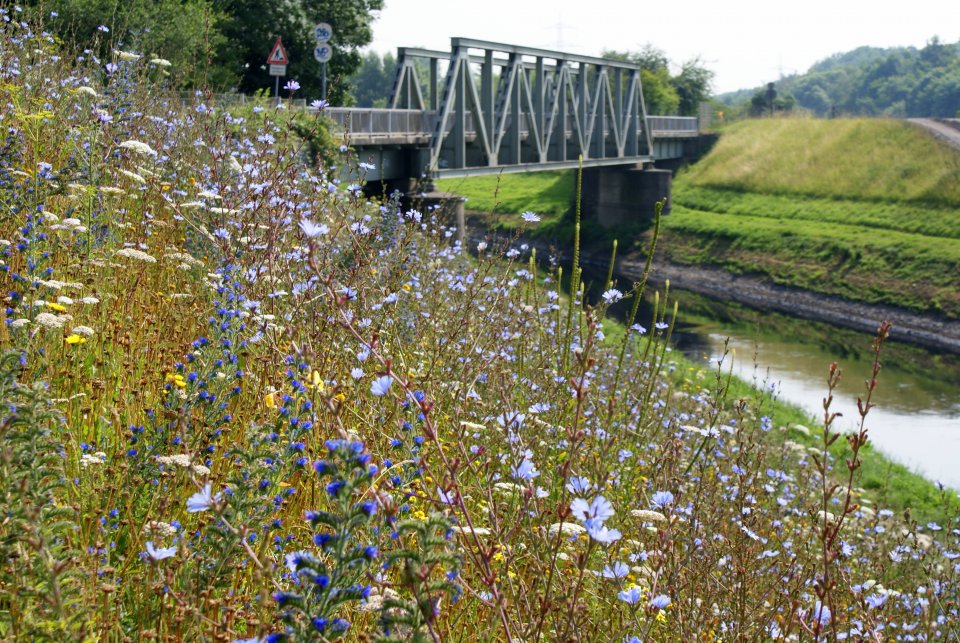
The metropolitan area Ruhrgebiet in western Germany is home to 5.1 million inhabitants and the moste densely populated area in Germany. Formerly a hotspot for mining, the region is now recovering from heavy pollution in many different ways. The Emscher river restoration is one of the most expensive river restorations in the world, costing more than 5 billion EUR. The river flows through 12 municipalities before leading into the Rhine and has a catchment size of around 775km2. The dykes along the Emscher are currently overgrown with grass and mowed several times a year.
For almost 30 years, until 2022, the Emscher river, flowing through Germany's larges metropolitan region, the Ruhrgebiet, has been restored from a heavily sewage loaded system to a vital river. As the river is located in a densely populated area, dykes and other flood protection structure are necessary at least in some part. This case study aims at transitioning the land use on these dykes and near river areas towards extensive meadows. It is a step towards creating synergies between river maintenance and nature protection.
This case study is one of 17 that are part of the EU Horizon2020 project MERLIN - Mainstreaming Ecological Restoration of freshwater-related ecosystems in a Landscape context: INnovation, upscaling and transformation.
- put innovative technical solutions for mowing high flowering meadows along dykes in place, where cutting material is collected and put to further use
- scientific research on how biodiversity is improved with extensivation of land use and how it might affect dyke stability/functionality
- citizen science projects
- creating biodiversity hotspots in areas that have no other land usage but that otherwise would be fallow (dykes)
- increasing recreational value
- increase awareness for NbS and the benefits of restoration
- Reduce run-off
- Increase Biodiversity
- Increase quality and quantity of green and blue infrastructures
- Enhancing sustainable urbanisation
- Changing image of the urban environment
- Increase awareness of NBS solution & their effectiveness and co benefits
- Increase social interaction
- Increase well-being
Further information
- 3. Good Health and Well-being
- 6. Clean Water and Sanitation
- 12. Responsible Consumption and Production
- 15. Life On Land
